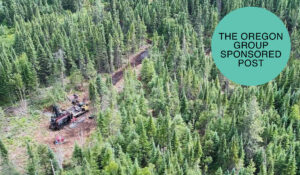- Kazatomprom, world’s largest uranium producer, warns of production shortfall
- logistical issues, eg transport and shortages in sulfuric acid could take years to fix
- concerns long-term supply contracts prioritize Russia and China over the West
Subscribe for Investment Insights. Stay Ahead.
Investment market and industry insights delivered to you in real-time.
Kazatomprom is the world’s largest and, arguably, most important uranium producer, accounting for 23% of global supply in 2022. To put in context, that’s double the next largest producer, Cameco in Canada.
The company has now warned production will be 20% below levels allowed by permits in 2024, with production impacted possibly into 2025. The warning comes just as uranium prices are approaching historic highs with significant fallout across the global energy and nuclear sector.
But this may not even be the biggest challenge facing Kazatomprom’s uranium supply to the West, with geopolitical tensions threatening to spillover into Kazatomprom’s joint venture partnerships across Kazakhstan, which make up a staggering 43% of global supply.


Who and what is Kazatomprom?
Firstly, a brief history:
- 1997: the National Atomic Company Kazatomprom Joint Stock Company created
- 2009: Kazatomprom becomes world’s largest production uranium producer, with production of 13,500 tU
- 2018: went public with 15% of the company’s share on offer on the Astana International Exchange (AIX) and London Stock Exchange (LSE)
- 2019: 3.8% shares sold; Kazakhstan produces 43% of global primary uranium supply
- 2020: 6.2% shares sold, so Kazatomprom is 75% state-owned through its sovereign wealth fund and 25% by minority stakeholders
The company boasts the largest uranium reserve base in the industry, with attributable uranium reserves of just under 300,000 tU.
Critically, as we’ll get to shortly, Kazatomprom mines exclusively with in-situ leach (ISL) methods (or, in-situ recovery (ISR)), which involves dissolving the ore while it’s still in the ground with acid and soda, and then pumping the solution to the ground where it can be recovered with no tailings, waste or disturbance on the surface.

Subscribe for Investment Insights. Stay Ahead.
Investment market and industry insights delivered to you in real-time.
The company operates all its mines and subsidiary processing operations inside the Republic of Kazakhstan. And, with no nuclear power station in Kazakhstan (yet), all of the company’s uranium is for export abroad.
Kazatomprom supply challenge for the West
The huge supply coming online from Kazatomprom combined with the Fukushima Daiichi accident in 2011 (when an earthquake and tsunami caused a nuclear accident in Japan, melting three cores — in which no one died) meant that nuclear policy rolled back across the world.
Investment in new mines and supply, especially when uranium hit US$16 a pound in 2016 made many mines unprofitable, fell correspondingly.
This has meant that, as the world shifts quickly and dramatically back to nuclear with, at least, 60 reactors under construction and over 110 planned, as well as others being switched back on, to meet it’s energy needs and net-zero targets — supply of uranium is increasingly tight.
(See our industry report: The Uranium Bull Market and the Coming of the Second Atomic Age)
And, just as supply is tightening, Kazatomprom’s near one-quarter of global supply is now at risk.
Sulfuric acid
In January 2024, Kazatomprom updated it’s production guidance from 25,300 tU to 21,750 tU for 2024, a decrease of over 14%, as well as warning production volume for the majority of its uranium mining operations will be 20% lower than levels allowed by permits.
It’s a significant u-turn after, last year, Kazatomprom said they planned to end restrictions to their own production — introduced to stabilise prices — by 2025, and ramp up production.
The main problem, ostensibly, is that they don’t have enough sulfuric acid, essential for in-situ leaching, to raise output levels.
Kazatomprom’s weighted average cost of sulfuric acid during 2023 increased 33.6%, due mainly to increased demand from agriculture (60% of global sulfuric acid supply is used in fertiliser production), as well as regional supply chain disruptions, which have led to shortages.
The problem is so acute that Kazatomprom plans to construct a new sulfuric acid plant in the Turkestan region to produce 800,000 tonnes of sulfuric acid per year. However, it’s only expected to be ready in 2026.
“If limited access to sulphuric acid continues throughout this year and should the company not succeed in catching up with the construction works schedule at the newly-developed deposits in 2024, Kazatomprom’s 2025 production plan may also be affected, subject to considerable supply chain risks”
— Kazatomprom 4Q23 Operations and Trading Update
But it’s not just sulphuric acid constraints holding back supply expansion to the West.
Russia
With their shared history and geography, political and trade ties between Russia and Kazakhstan have traditionally been close.
For example, the majority of Kazakhstan’s basic food imports come from Russia; when Russia halted sugar and grain exports in 2022, Kazakhs faced shortages and price increases.
And it’s similar for uranium.
Kazakhstan, including Kazatomprom, is heavily dependent on Russia to enrich and process its uranium, as Russia controls 40% of global uranium processing facilities and 46% of total world enrichment capacity.
Between Q1 2018 – Q3 2023, Russia was the fourth-largest supplier of uranium to the US; Kazakhstan and Russia combined sometimes the third-largest.

Subscribe for Investment Insights. Stay Ahead.
Investment market and industry insights delivered to you in real-time.
This obviously makes Kazatomprom’s uranium vulnerable to sanctions and supply chain risk, especially after Russia invaded Ukraine, with, for example, the US House of Representatives voting to ban Russian uranium imports in December 2023.
Options to process and enrich Kazatomprom’s uranium outside of Russia is not only logistically more challenging and expensive, but also there is limited capacity to process it outside of China (which poses it’s own challenge that we’ll get to shortly below).

Politically, the two countries are also very close.
Most recently, in January 2022, the Russia-led Eurasia military alliance Collective Security Treaty Organization (CSTO), deployed troops to Kazakhstan to quell political unrest and support Kazakhstan’s current president Kassym-Jomart Tokayev.
Despite this support, since Russia’a invasion of Ukraine, Kazakhstan’s president Kassym-Jomart Tokayev, has sought to publicly distance himself from Russia. For example, President Kassym-Jomart Tokayev has distanced himself from Russia’s actions and, in the most recent routine talks with Russian president Putin, he spoke in Kazakh for the first time, not Russian.
But, how much of all this is just a front?
For example, Kazakhstan’s exports have not exceeded US$60 billion annually over the last seven years (and only then because of historically high oil prices in 2013), until 2022. The increase of imports by US$10 billion in 2022 is “unprecedented.”
A report by Organized Crime and Corruption Reporting Project (OCCRP) revealed how Kazakhstan “has become a pathway for the supply of Russia’s war machine.”
All of which is to highlight: Kazakhstan’s close ties to Russia make the country vulnerable to secondary sanctions by the West and, in turn, Kazatomprom’s uranium.

Although sometimes difficult to gauge, the size of influence Russia’s influence over Kazatomprom was highlighted in 2022 with the sale of a stake in Kazakhstan’s Budenovskoye mine, projected to become one of the world’s largest sources of uranium, to Russia’s state atomic energy company, Rosatom.
Reportedly pushed by Kazakhstan’s sovereign wealth fund against the preference of Kazatomprom’s leadership, it led to the loss of two CEOs, a CFO, a chief operating officer and a chief commercial officer in less than 18 months “as they worried the lack of disclosure risked breaching their legal duties as company officials.”
It is an exercise that highlights Kazatomprom’s priorities when it comes to supply partners.
And this brings us to China.
China
In November 2023, China and Kazatomprom signed a long-term contract to supply uranium to China National Uranium Company Limited (CNUC (subsidiary of China National Nuclear Corporation – CNNC))).
“Volumes and specific contract terms cannot be disclosed due to confidentiality and commercial sensitivity”
— Kazatomprom Signs Term Contract with China National Uranium Corporation Limited
And, a second deal with Chinese state-owned State Nuclear Uranium Resource Development Company Limited (SNURDC) “worth 50% or more of the total book value of the Company’s assets” was also approved in September 2023.
China is building out one of the largest fleets of nuclear reactors in the world with 26 under construction, 42 planned, and 154 more proposed. It currently has 55 reactors already in operation.
All of this nuclear power will need a sizeable, secure source of uranium.
Quantity of supply remain undisclosed, but China’s goal is to have “uninterrupted long-term supplies” according to Kazatomprom Chief Executive Officer Yerzhan Mukanov.

The first deliveries of fuel assemblies from Kazatomprom to nuclear power stations in China started in November 2022, and have started to ramp up in 2023.
All of this comes after China’s President Xi Jinping made his first international trip since the Covid pandemic to Kazakhstan in 2022.
To put simply: the deals between Kazatomprom and both Russia and China threaten to squeeze out Western access.
Subscribe for Investment Insights. Stay Ahead.
Investment market and industry insights delivered to you in real-time.
Kazakhstan, Geography and Exports
There’s another problem for the idea of western supply: geography.
As we’ve highlighted in our analysis on Kazakhstan, the landlocked region is part of a “Great Game” for the region’s resources.

The major export channel, through processing and enrichment plants in Russia is the fastest and most cost-efficient to the West, via the port at St Petersburg.
However, the vulnerability of dependency on this route after tensions erupted between Russia and the West was brought to the fore when Cameco, running joint ventures in Kazakhstan, put deliveries of Kazakh uranium on hold until an alternative route avoiding Russia could be found.
Cameco’s uranium was eventually shipped through the Trans-Caspian International Transport Route (TITR) to Canada. The shipment arrived in Canada in December 2022.
And Kazatomprom has announced they are seeking to expand capacity of export routes that bypass Russia.
“However, the Trans-Caspian International Transport Route (TITR), which the company has successfully used as an alternative route since 2018, helps to mitigate the risk of the primary route being unavailable, for any reason”
— Kazatomprom
The Trans-Caspian International Transport Route goes from Kazakhstan over the Caspian Sea to Azerbaijan and then to Georgia, from where the uranium is shipped through Black Sea ports.
In H1 2023, 58% of shipments of uranium from Kazakhstan to the West was shipped through the TITR, with Kazatomprom expecting that number to increase to 71% for the entirety of 2023.
The challenge: not only is this route longer and more complex, through countries with little experience of handling radioactive material and also intermittent conflict (Azerbaijan and Armenia), but, is more importantly, more expensive.
According to research from investment firm, Ocean Wall, transport times differences are significant:
via TITR:
- Kazakhstan to France: ~24 days
- Kazakhstan to North America: ~42-43 days
vs, via St Petersburg:
- Kazakhstan to France: ~23 days
- Kazakhstan to North America: ~32-33 days
Costs from mine to market via St Petersburg are estimated at US$2/lb compared to US$10/lb via the Trans-Caspian route.
Kazatomprom also wants to open a third route, exporting to China and shipping to North America through one of China’s ports.
According to Ocean Wall’s estimates this would take:
- Kazakhstan to North America: ~42-43 days
And, as we noted above, China has just signed a long-term contract to procure a significant amount of uranium — for domestic consumption, not for export. The West, we suspect, would also be reluctant to trade vulnerable supply chains through Russia for supply chains through China.
France and Kazatomprom
In November 2023, French President Macron visited Kazakhstan on a regional tour, the first French president to visit Central Asia since Mitterand in 1994, accompanied by Orano President, Claude Imauven and head of French energy giant EDF, Luc Remont, as well as 14 other French executives.
To put the trip in context, France derives up to 70% of it’s electricity from nuclear from it’s fleet of 18 nuclear power plants with 57 reactors, with plans for potentially another 14 plants to reach net-zero targets. But some of the country’s traditional sources of uranium, such as Niger, have become increasingly unreliable.
Shortly after the trip, with numerous agreements signed, including strategic raw materials and nuclear fuel cycle development, the joint venture between French Orano Mining and Kazatomprom announced they will commence mining at Kazakhstan’s South Tortkuduk site at the end of 2023.
The visit by Macron highlights the West recognises the challenge to it’s uranium supply (British Foreign Minister also visited the country earlier in the year), but the question remains: is it enough to secure enough uranium supply.
Especially as, just days after Macron’s visit, Russian President Putin made a visit to the country, saying Russia will protect Central Asian nations from “unscrupulous” overtures by the West.
Conclusion
So far, Kazatomprom has met all its international obligations for uranium supply. However, the pressures are building on those commitments, including:
- unprecedented, rising global nuclear energy demand
- increased pressure and influence from Kazakhstan’s closest neighbours Russia and China to secure supply
- logistical challenges in ramping up supply, eg sulfuric acid shortages and sanctions on transport routes

All of these issues, we believe, can be resolved given time. But, that is the problem: time is running short. Demand is rising now — nuclear power generation is expected to reach record highs in 2024 — with pressures on ramping up supply unlikely to be fixed for years (eg lifting of sanctions of completing the sulphuric acid production plant).

In the high-stakes Great Game of resource control in Central Asia, any sudden and severe tightening of global uranium supply threatens to expose the West’s precarious position compared to its competitors.
Subscribe for Investment Insights. Stay Ahead.
Investment market and industry insights delivered to you in real-time.




















